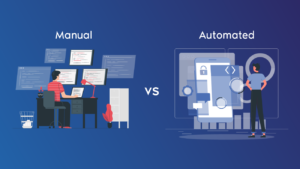Real Time Scenario Based Manual Testing Interview Questions with Answers
As a QA Engineer, you may face a variety of real-time scenarios while testing software. These scenarios for real time manual testing interview questions can range from identifying critical bugs to ensuring that an application is ready for release to production.

Here are the top 20 Real Time Manual Testing Interview Questions with answers to help you prepare for your next QA Engineer interview.
Real Time Manual Testing Interview Questions
1. Can you describe your experience with testing software in a real-time environment?
Answer: Sure, I have experience testing software in real-time environments such as stock trading systems and financial transaction processing systems. These types of systems require testing for high levels of performance, security, and reliability. In addition, real-time systems often have strict timing requirements, so testing needs to ensure that the system meets these requirements.
2. How do you ensure that a software application is ready for release to production?
Answer: To ensure that a software application is ready for release to production, I follow a structured testing process that includes functional, performance, security, and regression testing. I also work closely with the development team to ensure that all defects have been resolved, and all user requirements have been met. Finally, I verify that the system meets all necessary performance and reliability requirements.
3. Can you walk me through a real-world scenario where you found and fixed a critical bug?
Answer: Sure, I once found a critical bug in a financial transaction processing system that caused the system to crash when processing certain types of transactions. I first identified the root cause of the problem by analyzing log files and reviewing the system’s code. I then developed a fix and tested it in a staging environment. Once I was confident that the fix worked, I deployed it to the production environment and verified that the system was functioning correctly.
4. How do you prioritize testing efforts when working on a tight schedule?
Answer: When working on a tight schedule, I prioritize testing efforts based on the criticality of the system’s features and functions. I focus first on the most critical features and functions and then move on to less critical ones. Additionally, I work closely with the development team to ensure that testing efforts are aligned with their development schedule and to ensure that any issues found are addressed in a timely manner.
5. How do you determine which test cases to automate versus manually?
Answer: I determine which test cases to automate versus manually execute based on the frequency of testing, the complexity of the test case, and the likelihood of human error. Test cases that are executed frequently and involve complex calculations or data manipulation are good candidates for automation. Conversely, test cases that are executed infrequently or involve subjective analysis are better suited for manual execution.
6. Can you explain your approach to performance testing in a real-time system?
Answer: My approach to performance testing in a real-time system involves setting up a test environment that closely simulates the production environment. I then create test scripts that simulate realistic user traffic and activity. I monitor the system’s performance during testing and use tools such as load testing and stress testing to identify bottlenecks and performance issues. Finally, I work with the development team to optimize the system’s performance.
7. What is your experience with testing software that has integrations with external systems?
Answer: I have experience testing software that has integrations with external systems such as payment gateways, shipping systems, and inventory management systems. I ensure that the software interacts correctly with these external systems and that data is correctly transmitted and received. Additionally, I verify that error handling and recovery processes are in place and that the system can handle unexpected results from external systems.
8. How do you handle unexpected results during testing and what steps do you take to investigate them?
Answer: When unexpected results occur during testing, I first isolate the issue and determine the root cause. I then work with the development team to develop a fix and test it in a controlled environment. Finally, I verify that the fix resolves the issue and that the system is functioning as expected.
9. Can you describe a situation where you found and resolved a critical bug in a real-time system?
Answer: One example of a critical bug I found and resolved was in a stock trading system. The bug caused trades to be executed twice, resulting in significant financial losses for the company. I identified the root cause of the issue, developed a fix, and tested it in a staging environment before deploying it to the production environment. I also implemented additional tests to prevent the issue from occurring in the future.
10. How do you ensure that software is secure and protected from cyber attacks?
Answer: To ensure software is secure and protected from cyber attacks, I conduct security testing to identify vulnerabilities in the software. This includes testing for SQL injection attacks, cross-site scripting, and buffer overflows. I also ensure that data is encrypted during transmission and storage, and that access controls are in place to prevent unauthorized access.
11. Can you describe your approach to testing a mobile application?
Answer: My approach to testing a mobile application involves testing the application on multiple devices and platforms to ensure compatibility. I also test the application’s performance, including load testing and stress testing. Additionally, I conduct user acceptance testing to ensure that the application meets user expectations and is user-friendly.
12. How do you ensure that software is accessible to users with disabilities?
Answer: To ensure that software is accessible to users with disabilities, I conduct accessibility testing to identify issues such as insufficient contrast, non-standard navigation, and lack of audio descriptions for video content. I also ensure that keyboard navigation is available, that text can be resized, and that screen readers can read content correctly.
13. Can you describe your experience with testing software that integrates with third-party APIs?
Answer: I have experience testing software that integrates with third-party APIs, such as payment gateways and shipping systems. I ensure that the software interacts correctly with these external systems and that data is transmitted and received correctly. I also test error handling and recovery processes to ensure the software can handle unexpected results from third-party APIs.
14. Can you describe your approach to regression testing?
Answer: My approach to regression testing involves testing previously tested features and functions to ensure they still work as expected after changes have been made. I create a regression test suite that includes both automated and manual test cases. I also prioritize test cases based on the risk associated with changes made to the software.
15. Can you describe your approach to performance testing?
Answer: My approach to performance testing involves simulating realistic user traffic and activity to identify bottlenecks and performance issues. I also use tools such as load testing and stress testing to test the software’s ability to handle high levels of traffic and activity. I work with the development team to optimize the software’s performance and ensure it meets performance requirements.
16. Can you describe a situation where you had to work with a difficult team member or stakeholder?
Answer: In one situation, I had to work with a team member who was resistant to feedback and suggestions. I approached the situation by taking the time to understand their perspective and concerns. I also presented data and evidence to support my suggestions and worked to build a positive working relationship with the team member.
17. Can you explain a situation where you had to deal with a critical defect in a live production environment?
Answer: Yes, I had a situation where there was a critical defect in the production environment, which was impacting the customer experience. We immediately raised the issue to the development team and they provided a hotfix to address the issue. We tested the fix and deployed it to the production environment after ensuring that it did not introduce any new defects.
18. Can you give an example of a scenario where you found a defect during exploratory testing?
Answer: Sure, during exploratory testing, we were testing an e-commerce application and found that the payment gateway was not functioning properly. We raised the defect to the development team, and after their investigation, it was found that the issue was caused due to a configuration error. The team immediately resolved the issue, and we retested to ensure the payment gateway was functioning properly.
19. Explain a situation where you had to handle a situation where a feature was not documented properly?
Answer: I had a situation where we found that a feature was not documented correctly, and the documentation was causing confusion among the team members. We immediately raised the issue to the product owner, and they provided us with updated documentation. We then verified the feature based on the updated documentation and ensured that the feature was working as expected.
20. Can you describe a scenario where you had to perform load testing?
Answer: Yes, I had to perform load testing on a banking application to ensure that it could handle the expected traffic during peak hours. We created test scenarios that simulated a high number of concurrent users accessing the application simultaneously. We monitored the application’s performance under the heavy load and identified performance bottlenecks. We then provided recommendations to the development team to improve the application’s performance under load.






